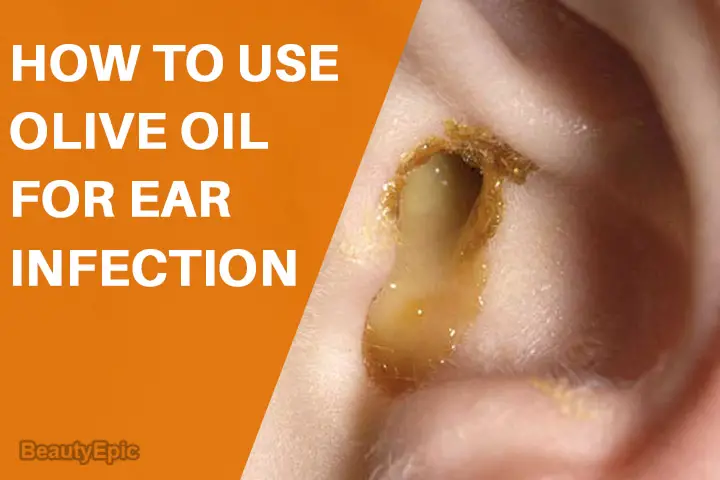
Important: This article is for informational purposes only. Please read our full disclaimer for more details.
One of the main causes of ear infections is the accumulation and growth of bacteria and fungus in the wax present in the ear canal. The obstruction in the ear canal caused by the bacteria and fungus often causes excruciating pain. It is also caused due to infections in the throat, specially tonsillitis. Ear infections usually take time to clear. Pharmaceutical ear drops are available in the market but the chemicals can prove harmful to the ear canal and ear wax, hence the use of natural products is encouraged. Here we discussed some effective ways to use olive oil for ear infection treatment.(1)
How Effective is Olive oil for Ear Infection?

- Olive oil helps in softening the ear wax. This helps in clearing any obstruction in the ear canal that leads to ear infections.(2)
- Olive oil is a potent anti-bacterial, anti-fungal and anti-viral agent which helps in killing any microbial contamination in the ear canal.
- Olive oil works as a relaxant and analgesic. This helps in relieving any pain caused in the ear canal as a result of an infection.
How to Use Olive oil for Ear Infection
Olive oil is made up of oleic acid, linoleic acid and palmitic acid. It can be highly beneficial in curing ear infections and here we shall show you how.
1. Warm Olive oil for Ear Infection
You’ll need:
- olive oil
- dropper
- cotton swab
Preparation time: 2 minutes.
How to do:
- Warm the olive oil and use a dropper to add olive oil drops to the ear canal.(3)
- Leave the olive oil in the ear canal for about 5-10 minutes.
- Once the wax has softened, remove the wax using a cotton swab.
Repetitions: Repeat this process regularly for a cure.
2. Olive oil and Garlic for Ear Infection

Olive oil can also be used in combination with mustard oil or garlic oil for clearing ear infections.
You’ll need:
- olive oil
- garlic oil or mustard oil
- cotton swab
Preparation time: 3 minutes.
How to do:
- Mix equal parts of olive oil with equal concentrations of either mustard oil or garlic oil.
- Mix well and use a clean cotton swab to pour this liquid into the entrance of the ear canal.
- It can also be used as ear-drops.
- Leave this in for about 10 minutes and then clean and properly dry the ear.
Repetitions: Repeat this process regularly.
[ Read: How to Cure Ear Infection with Garlic ]
Tips and Precautions:
- Care needs to be taken that the liquid is not left in the ear canal as it can cause further infections.
- Do not use sharp objects to remove even the softened wax as it could damage the ear and cause hearing loss.
- If using olive oil does not help in a while it would be better to consult an ENT specialist before the condition worsens.
People allergic to olive oil must ask their physician before using it for ear infections even though it is not being ingested in this case.
You Might Also Like:
- Apple Cider Vinegar for Ear Infection: How to Use?
- 6 Best Essential Oils for Ear Infection and How to Use
- Ear Mites in Humans: Symptoms and Treatments
- Can Olive Oil Remove Wax or Treat an Earache?
- How to Cure an Earache Fast at Home with Onion
- 8 Simple and Effective Home Remedies for Earache
- How To Use Sweet Oil For Earache Relief
- How to Treat Earache With Tea Tree Oil?
- How to Use Apple Cider Vinegar for Earaches Relief?
- How to Clean Ears With Hydrogen Peroxide
- Why Do My Ears Get Hot and Red Suddenly? Causes and Treatment
- Why Do Older Adults Wake Up Early? Understanding and Easing Age-Related Sleep Shifts
- How Does Breast Milk Help ear Infection
- Benefits Of Olive Oil (Jaitun Ka Tel)
Image:- 1















